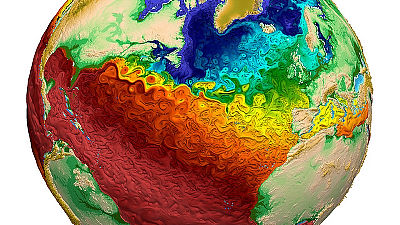A research report that wind power generation and solar power generation contribute to greening of the desert

" Wind power generation " and " solar power generation " expected to be applied in the future as renewable energy are thought to have a local influence on the climate in the area where the power generation facilities exist. Research results have been reported that simulating a large-scale wind power generation and photovoltaic generation in the world's largest desert and the Sahara desert spreading north of Africa will increase greening with increasing precipitation.
Climate model shows large-scale wind and solar farms in the Sahara increase rain and vegetation | Science
http://science.sciencemag.org/content/361/6406/1019
Mr. Ewan Lee, a doctoral researcher at the University of Illinois who is studying how wind power and photovoltaic power affects the climate is the first to model climate impacts from wind and solar power generation He is a researcher and is investigating how plants respond to changes in heat and rainfall.
Lee said, "In the past survey, it has been said that large-scale wind power generation and solar power generation are likely to cause major climate change on continental scale, but the expected climate effect actually In order to find out how much it appears, we need to study vegetation feedback. "
Mr. Lee focuses on the world's largest desert, the Sahara Desert. For both wind power generation and photovoltaic power generation, what kind of influence will be caused when the facility that covers more than 9 million square kilometers and can generate a total of over 80 terawatts in total can be operated in the Sahara Desert I simulated it.

by Luca Galuzzi
This simulation revealed that wind power generation caused an increase in the temperature of the surface of the earth, and the lowest temperature in the Sahara became larger than the highest temperature. According to Mr. Lee, the wind turbine can blow off warm air from above, and the nighttime warming will become more noticeable. As a result, it seems that precipitation increased by 0.25 mm per day on average in the area where the wind power plant was installed.
In addition, we found that shading was made by placing a panel of solar power generation, the temperature of the ground surface was lowered, and it was also found that temperature rise could be suppressed. The figure below shows the change in average temperature and precipitation due to wind power generation (A and B), solar power plant (C and D), and both (E and F). The gray point on the map is the point assuming the installation of the power plant, and the darker part becomes the place where the change of the average temperature (red) and the precipitation (blue) appears greatly.

According to Mr. Lee, this increase in precipitation leads to an increase in vegetation and promotes greening. Mr. Safa Motecharey of the University of Maryland who collaborated with Mr. Lee "It turned out that solar power generation and wind power generation are promoting the increase of rainfall and vegetation as a byproduct of clean electricity.This fact May be useful for agriculture, economic development and social welfare of the Sahara desert and the Middle East. "
Related Posts:
in Note, Posted by log1i_yk







